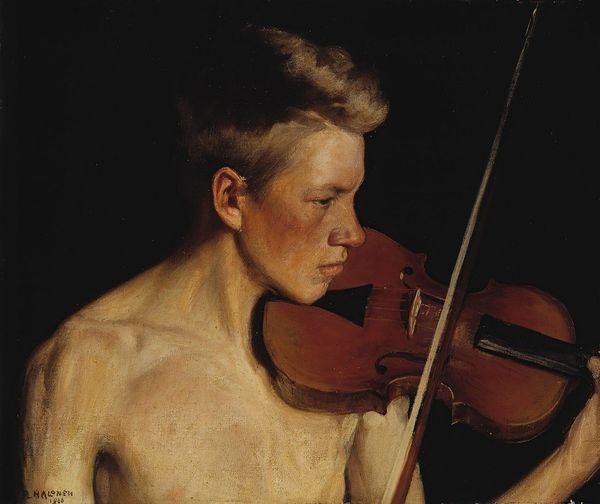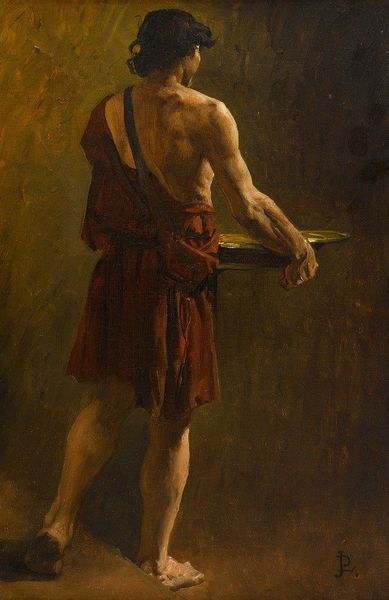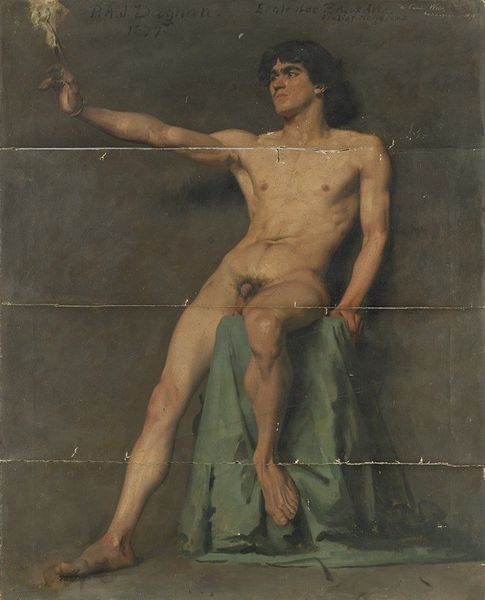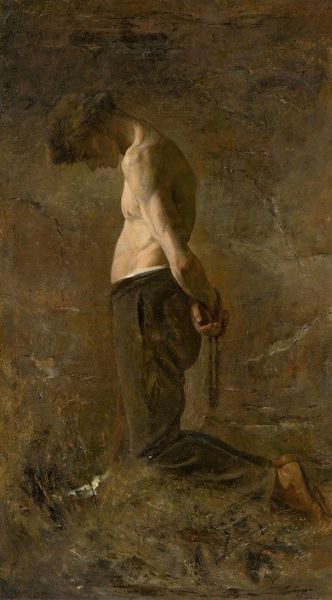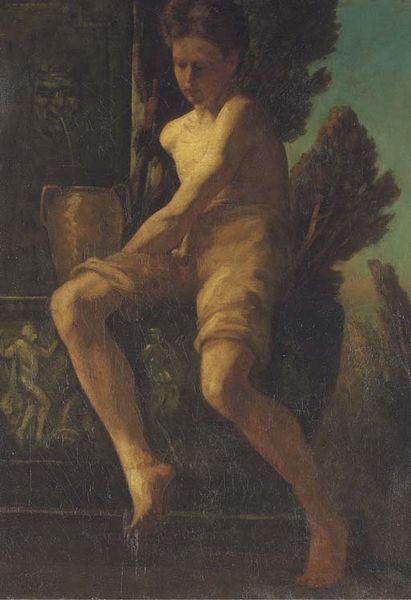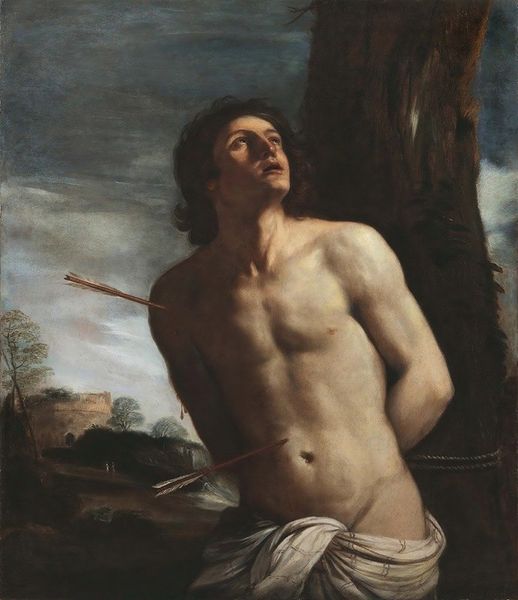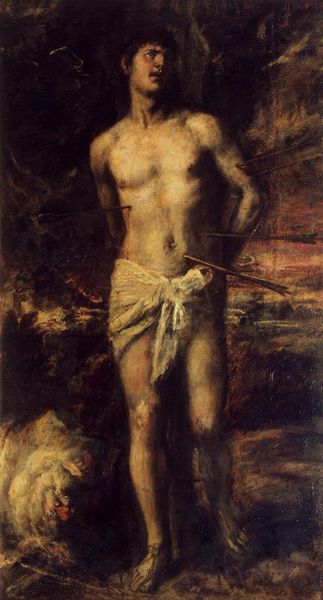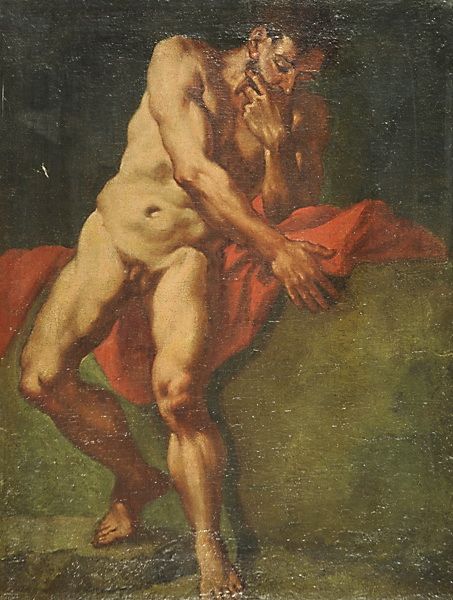
painting, oil-paint
#
portrait
#
narrative-art
#
painting
#
oil-paint
#
charcoal drawing
#
figuration
#
oil painting
#
portrait reference
#
underpainting
#
symbolism
#
history-painting
#
portrait art
Copyright: Public domain
Curator: I’m immediately drawn to the somber mood in Karoly Ferenczy’s “Orpheus,” completed in 1894. The dim lighting and forest backdrop create an aura of mystery, don’t you think? Editor: Definitely. Before delving into context, I notice how Ferenczy positions Orpheus off-center, emphasizing the dense, almost oppressive woods surrounding him. It really conveys a sense of isolation and a premonition of the tragedy to come. Curator: Exactly. Understanding the myth is essential. Orpheus, famed for his musical skill, dared to venture into the underworld to retrieve his deceased wife, Eurydice. Ferenczy captures him perhaps just before that fateful descent, or perhaps after the tragic loss of his wife, in an unending expression of grief. Considering late 19th-century anxieties surrounding gender and loss, it could also signify societal grief projected onto a mythological narrative. Editor: And notice the instrument, not his iconic lyre, but a violin. Ferenczy perhaps meant to modernize the myth, to make its pain feel more immediate for his audience. The violin itself carries heavy cultural weight in many traditions; think of its use in mournful folk songs or operatic laments. Its visual presence in this painting serves to heighten the emotional intensity. Curator: It’s also important to recognize the visual language of symbolism inherent in the period, and this specific character—the artist. What is the implication when this mythical representation of an artist's experience, and male angst, is viewed from our current socio-political perspective? Editor: Yes, that interplay between historical context and current interpretations is crucial. I also find myself focusing on the light. Spotlit but vulnerable. Even the shadow of what could be interpreted as a bird in the upper left section looms ominously as an implied ill omen for his path ahead. It speaks to both personal tragedy and shared cultural anxieties around mortality. Curator: I appreciate how analyzing this work underscores the importance of approaching historical artworks with both sensitivity and critical awareness of power dynamics. Editor: For me, this particular interpretation deepens my connection to the work, seeing not just a historical piece, but an ongoing meditation on loss, art, and the enduring power of myth.
Comments
No comments
Be the first to comment and join the conversation on the ultimate creative platform.

